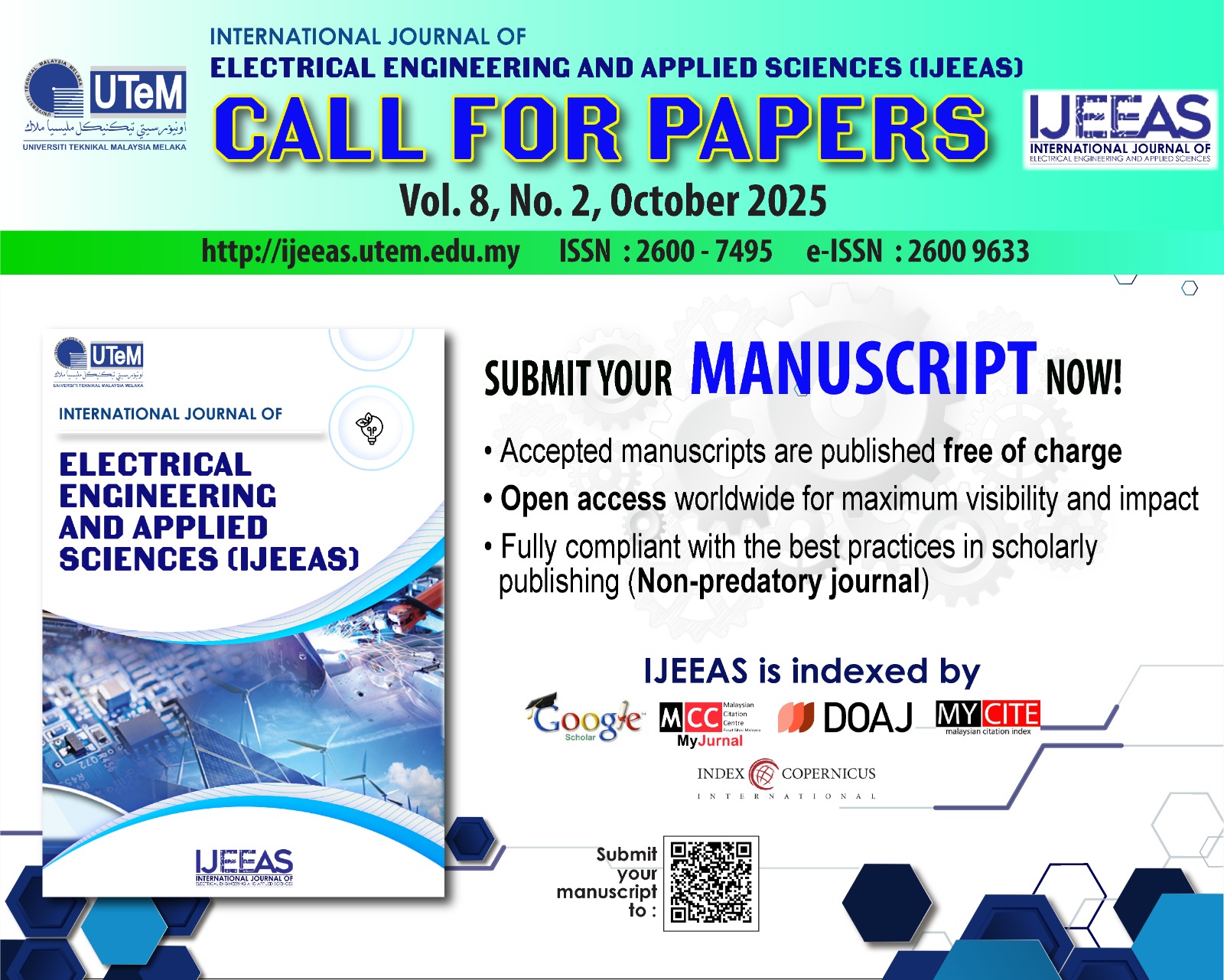Development of Ground Penetrating Radar Hybrid System Using Vivaldi Antenna for Buried Object Detection
Abstract
Ground penetrating radar (GPR) is categorized based on the number of antenna and modulation technique used for buried object detection. GPR systems that were often studied are the GPR of amplitude modulation and GPR of frequency modulation. Based on these two types of GPR system, the GPR of frequency modulation which is known as Stepped Frequency Continuous Wave (SFCW) is easy to be developed using only antenna and vector network analyzer (VNA). This study combined the Pulse modulation and SFCW GPR to form the GPR Hybrid. The combination was made in order to develop Pulse modulation GPR system of amplitude modulation GPR type using VNA. Discussion on this developed Hybrid GPR using the CST studio Suite 2014 software, included the design of a GPR antenna called the Vivaldi antenna of patch types, the design on simulation system of GPR Hybrid system, and the implementation of GPR Hybrid system using vector network analyzer. After the validation process, the developed GPR Hybrid system equipment was able to successfully detect a metal object that was buried in a wooden chamber containing dry sand.
Downloads
Downloads
Published
How to Cite
Issue
Section
License
Authors who publish with this journal agree to the following terms:
- Authors retain copyright and grant the journal right of first publication with the work simultaneously licensed under a Creative Commons Attribution License that allows others to share the work with an acknowledgement of the work's authorship and initial publication in this journal.
- Authors are able to enter into separate, additional contractual arrangements for the non-exclusive distribution of the journal's published version of the work (e.g., post it to an institutional repository or publish it in a book), with an acknowledgement of its initial publication in this journal.
- Authors are permitted and encouraged to post their work online (e.g., in institutional repositories or on their website) prior to and during the submission process, as it can lead to productive exchanges, as well as earlier and greater citation of published work (See The Effect of Open Access).







